Skeuomorph is the term used to refer to an object, in architecture and archaeology, which retains ornamental designs, not out of functionality, but because it was part of the necessary structure in the original. The actual word is derived from the Ancient Greek skeuos which can be translated as “tool” or “vessel” and morphe is “shape.”
Some of the most obvious examples of skeuomorph are the decorative stone features located on Ancient Greek temples. These include mutules, guttae, and modillions that are derived from the original functional feature of the early wooden temples.
Modillions are ornamental brackets that are utilized to support the upper part of a Corinthian or Composite cornice. Classical examples are usually in the form of scrolls with acanthus leaves.
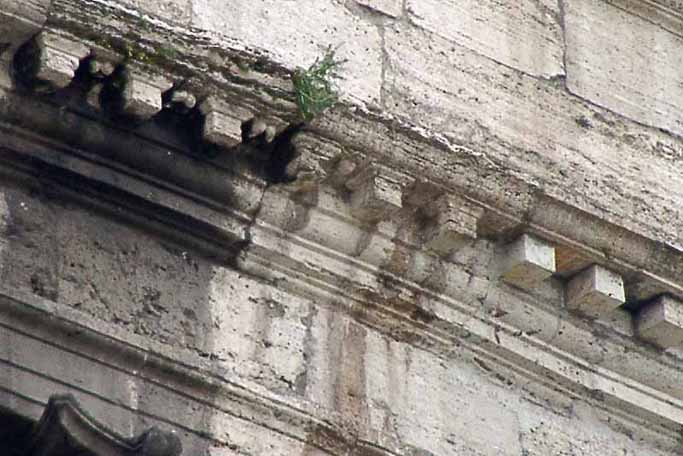
Coliseum in Rome, Italy.
Mutules, on the other hand, are the equivalent of modillions in the Corinthian order. These are flat blocks under a Doric cornice decorated on the outside with rows of six guttae or drops.
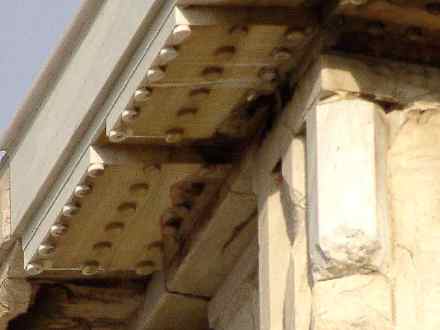
Parthenon in Athens, Greece.
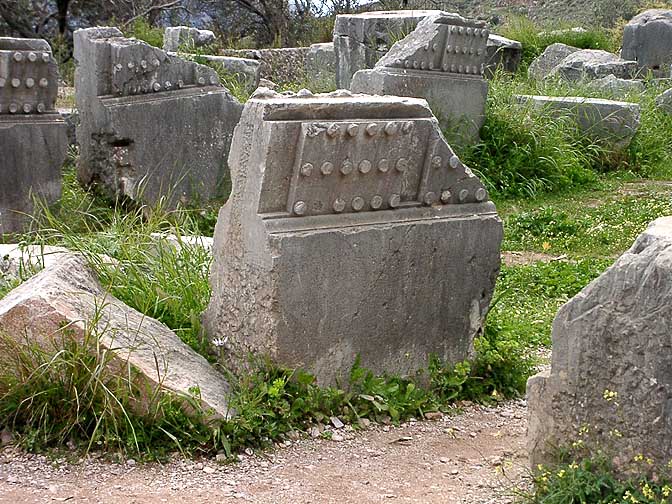
Delphi, Greece.
Guttae
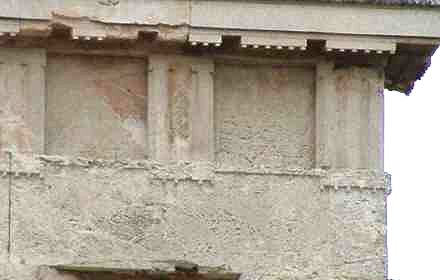
Temple of Aphaia on Aegina, Greece.
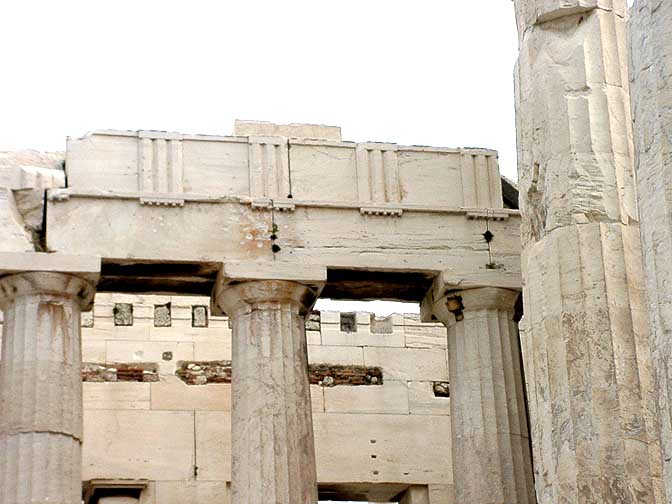
Propylaia, Athens, Greece.
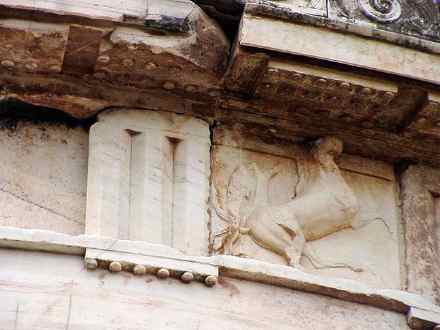
Tholos Tomb, Greece.
Vickers, M. & Gill, D. Artful Crafts: Ancient Greek. (Oxford, 1994).
Freeth, C.M. & Taylor, T.F. Skeuomorphism: Deference and Emulation. (New York, 2001).
